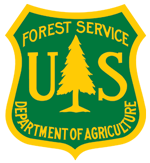National Park Service: National Capital Region
|
The National Capital Region (NCR), headquartered in Washington, DC, administers the National Mall and monumental core parks that were established the same time the Nation's Capital was founded in 1792. These oldest national park areas, along with dozens of historic sites, natural areas and Civil War battlefields comprise today's National Capital Region of the National Park Service. |
|
The National Capital Region and the Appalachian LCCThe National Capital Region has been an integral part of the Appalachian LCC Steering Committee from the very beginning, especially in their role on the Executive Committee. In this role, NCR has been a major partner in developing the governance structure, the mission and vision of the Cooperative, and helping to identify the major science needs and research projects to address landscape issues. In addition, the two organizations have been invited to participate in an upcoming Structured Decision Making Workshop on June 2-6, 2014, in Shepherdstown, West Virginia. They both submitted a proposal to the National Conservation Training Center for a session to focus on incorporating cultural resources within the LCC Network. The working session would offer an opportunity to identify tools, resources, and approaches common with cultural resources management and research that may not be familiar to the natural resources community. It would also lay out a framework to guide the next steps in integrating cultural resource considerations into the LCC planning agenda. Both organizations saw a critical need in bringing together key representatives of cultural resource management with LCC leadership to begin to engage this community in landscape-level planning and conservation. National Capital Region Inventory & Monitoring Network
The NCRN encompasses four distinct physiographic provinces, stretching from east to west through the Atlantic Coastal Plain, the Piedmont, the Blue Ridge, and the Valley and Ridge provinces. This landscape provides a wide range of resources and ecological niches, yet NCRN parks share many features and challenges. With acreages ranging from 130 (Wolf Trap) to 19,612 (C&O Canal), NCRN parks on average are small, and all are effected by urbanization radiating from Washington, DC in the network's center. Outside of marshes and managed open areas, forests are the dominant vegetation of NCRN parks, making up approximately 74% of landcover. The vast majority of NCRN park land is also part of the Potomac River watershed, the second-largest tributary of the Chesapeake Bay—America's largest estuary. For More Information |
History and Historic Preservation in the National Park Service
Climate Change in National Capital Region Parks
Certain gases like carbon dioxide are released as a byproduct of human activities such as transportation and manufacturing. The gases build up in the atmosphere and trap heat. As we overload the atmosphere with these gases, the planet's average temperature increases. Many things are changing as a result. Ice is melting, sea levels are rising, and seasons are shifting. These changes have the potential to substantially alter the character of our national parks. For example, the Joshua trees in Joshua Tree National Park might not survive in a hotter world. In the face of climate change, how can we take care of the important resources in our national parks? These web pages explain our response, and show how you can help. Predicting Vulnerability to Sea Level Rise
Low-lying coastal areas in the NCR parks contain a diversity of natural, cultural, and historical resources as well as important transportation resources. The relative rate of sea level rise for the Washington, DC region is roughly 3.5 mm/yr. Rising sea level could result in more frequent inundation, possible displacement of resources,and higher risk of storm damage. These risks are compounded by trends in coastline development, which limits flexibility and increases the cost of the most practical management solutions. It is incumbent upon the NPS to identify the possible risks to resources and develop strategies to adapt to potential changes. It is also important for the NPS to look at current and future restoration or capital improvement plans to determine if they account for the potential impacts resulting from sea level rise. This project focuses on tidal freshwater marshes and coastal forests to evaluate the vulnerability of NPS biological resources (habitat, species diversity, and risk of invasive species) to sea level rise, and to provide park managers with information and tools to improve their ability to make informed management decisions. Even though examining the impact to cultural resources is not a focus of this project, the tools, data, and results could be leveraged to determine areas of risk. |

 The National Capital Region Network (NCRN), is one of 32 I&M networks nationwide. It contains 11 park units in Virginia, West Virginia, Maryland, and the District of Columbia that share common natural resources. The NCRN parks are: Antietam National Battlefield, Catoctin Mountain Park, Chesapeake & Ohio Canal National Historical Park, George Washington Memorial Parkway, Harpers Ferry National Historical Park, Manassas National Battlefield Park, Monocacy National Battlefield, National Capital Parks - East, Prince William Forest Park, Rock Creek Park, and Wolf Trap National Park for the Performing Arts.
The National Capital Region Network (NCRN), is one of 32 I&M networks nationwide. It contains 11 park units in Virginia, West Virginia, Maryland, and the District of Columbia that share common natural resources. The NCRN parks are: Antietam National Battlefield, Catoctin Mountain Park, Chesapeake & Ohio Canal National Historical Park, George Washington Memorial Parkway, Harpers Ferry National Historical Park, Manassas National Battlefield Park, Monocacy National Battlefield, National Capital Parks - East, Prince William Forest Park, Rock Creek Park, and Wolf Trap National Park for the Performing Arts. Stories of America’s diverse places and people are everywhere. Our stories are found across the landscapes of our nation, in more than 400 national parks, in National Heritage Areas, along historic trails and waterways, and in every neighborhood.
Stories of America’s diverse places and people are everywhere. Our stories are found across the landscapes of our nation, in more than 400 national parks, in National Heritage Areas, along historic trails and waterways, and in every neighborhood. Climate change is here, it will worsen over time, and it threatens our natural and cultural resources. Although our weather is variable — we might experience a rainstorm, a dry week, or a cold snap — the average long-term pattern of these weather conditions, known as "climate," is changing.
Climate change is here, it will worsen over time, and it threatens our natural and cultural resources. Although our weather is variable — we might experience a rainstorm, a dry week, or a cold snap — the average long-term pattern of these weather conditions, known as "climate," is changing. Global climate change is resulting in sea level rise in many coastal systems worldwide. Parks in the National Capital Region (NCR) of the National Park Service (NPS), including George Washington Memorial Parkway, the Chesapeake and Ohio Canal National Historical Park, National Capital Parks – East, Rock Creek Park, and the National Mall and Memorial Parks, manage land along the tidal freshwater sections of the Anacostia and Potomac Rivers. The impact of sea level rise in these parks is arguably the most pressing problem related to climate change.
Global climate change is resulting in sea level rise in many coastal systems worldwide. Parks in the National Capital Region (NCR) of the National Park Service (NPS), including George Washington Memorial Parkway, the Chesapeake and Ohio Canal National Historical Park, National Capital Parks – East, Rock Creek Park, and the National Mall and Memorial Parks, manage land along the tidal freshwater sections of the Anacostia and Potomac Rivers. The impact of sea level rise in these parks is arguably the most pressing problem related to climate change.



















